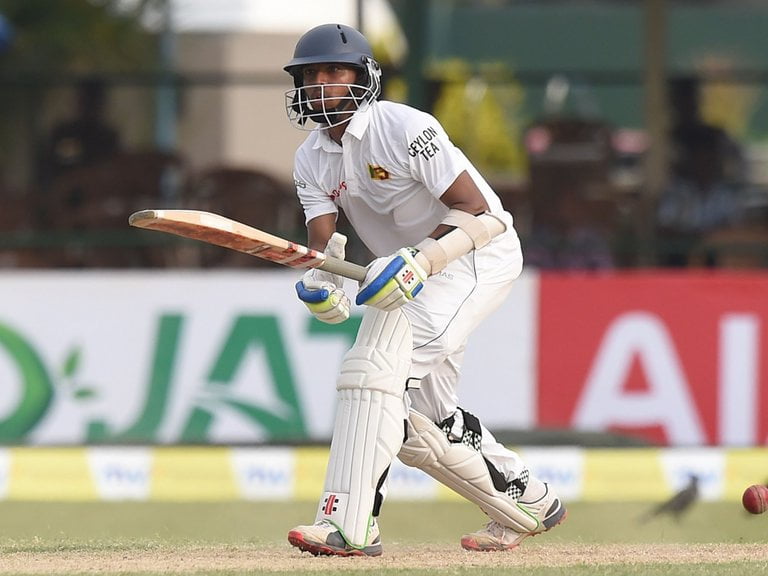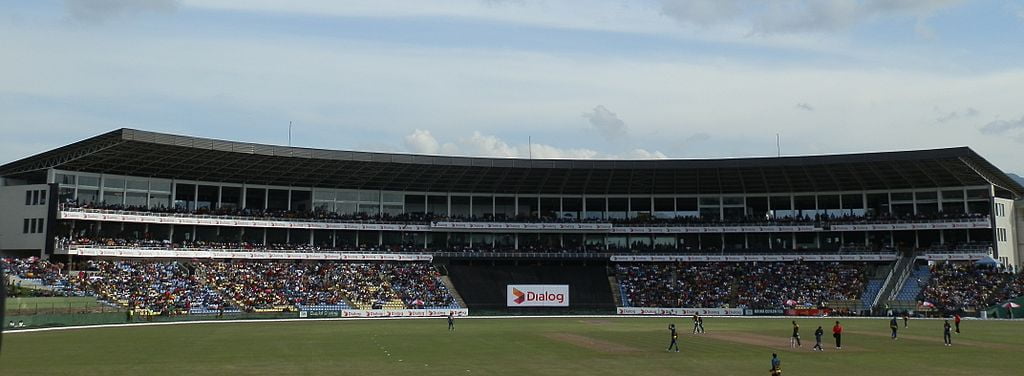The troubles that have afflicted Sri Lankan cricket ever since their home triumph against Australia in 2016 continued in the second half of 2017, culminating in a humiliating three-nil Test defeat at home to India.
It was not so much the fact of the defeat that hurt. After all, this was not Sri Lanka’s first whitewash in a series at home; Australia inflicted a three-nil defeat in 2003-04. But the manner of this defeat was different. In that Australian series, although the margins in two of the games were substantial, Sri Lanka never looked outclassed against an immensely powerful Australian side. Now, Sri Lanka seemed more or less to give up.
In a sense Sri Lanka were hoist by their own petard. For years, since what one might call the Muralitharan ascendancy, their modus operandi at home has been to bat first, score lots of runs and then put the spinners on. It has worked a treat. India followed this formula to the letter. They won the toss in all three games and in the first two made at least 600. In the third, at Pallekele, they made “only” 487, but this was enough to enable them to have the hosts done and dusted before the close of the third day. The main variation was that, particularly at Pallekele, the seamers, especially the impressive Mohammed Shami, did much of the damage.
It is true that Sri Lanka were unlucky with injuries. Asela Gunaratne, Suranga Lakmal and Nurwan Pradeep missed the entire series, and leading spinner Rangana Herath did not play in the final Test. But constant injury concerns are more often a symptom of problems in a team than a cause of them. It is no coincidence that the best teams rarely suffer major injury worries.
It is also worth wondering how long Sri Lanka and its advocates can continue to rely on the “how can we replace Mahela and Sanga” line. Kumar Sangakkara played his last Test in August 2015 – two years ago; Mahela Jayawardene’s was a year before that. They were great players, but it is no longer possible to regard their absence as an excuse, let alone a reason, for poor performances.
There are also leadership issues. Angelo Mathews has given up the Test captaincy and there is still an interim coach. It does seem a shame to have parted company with the highly experienced Graham Ford after the Champions Trophy. Former skipper Arjuna Ranatunga wasted little time before attacking board administrators after the Indian debacle and a sense of crisis never seems far away.

Kusal Mendis of Sri Lanka. Image from Sky.com
It is not all doom and gloom. The one point in the series when Sri Lanka showed a bit of fight was in the second innings of the second Test in Colombo when Dunuth Karunaratne and Kusal Mendis made centuries in difficult and challenging circumstances. Mendis, still only twenty-two, has already demonstrated that he is a player of the highest class. But his path will not be trouble-free; being a great player in a struggling side is not easy. Karunaratne has played a few important innings in recent months but in order for his team to prosper he needs to start making runs regularly in the first innings. Norishan Dickwella played some plucky and enterprising innings but his style is such that an entertaining forty is always much more likely than a match-saving century.
In the Test arena immediate improvement is unlikely. Herath, who has taken more wickets in Tests than any other slow left arm bowler, will be forty in March. There are a few young spinners in the wings but no obvious successor.
There was a more general, and very depressing, message sent by this series, but by no means just this one. One sided Test matches are becoming more prevalent. This does not necessarily mean a one-sided series – the 2015 Ashes ended up three-two – but it usually does. While India were routing Sri Lanka, England were beating South Africa three-one: none of the games was close. At a time when Test cricket is really struggling in various parts of the world, spectators and even broadcasters might begin to wonder what the point of it all is.
Prior to the India series, Sri Lanka hosted Zimbabwe to five ODIs and a Test match. The Test, in Colombo, was a fine, well contested game which Sri Lanka won by chasing down a record (in Sri Lanka) target of 390. Most of the batsmen made runs, Dickwella top-scoring with 81. Herath took eleven wickets, so it was business as usual there. But this was only Zimbabwe’s nineteenth Test since their tentative return to the five-day game in 2011. As recently as last year they lost two-nil to Sri Lanka at home. Although they lost the game, Zimbabwe should not be too disappointed with their performance.
And they won the ODI series three-two. Sri Lanka are finding it impossible to defend even quite substantial totals. There were some individual highlights. Dickwella batted brilliantly in a number of the games and leg spinner Wanidu Hasaranga took a hat trick on debut in the second match at Galle. But overall performances were not convincing.
Now they have to contest a five-day series against India. The series is more significant than the typical, slightly meaningless, bilateral series because if they win two games Sri Lanka will qualify automatically for the 2019 World Cup. Everyone knows how good a one day side they can be. ODI skipper Upul Tharanga needs to put the nightmare Test series behind him and show some leadership.
Bill Ricquier
Featured image: Pallekele International Cricket Stadium by Gihan Jayaweera. CC BY-SA 3.0 via Wikimedia Commons
This article also appeared in Scoreline magazine:

Article as it appeared in the Scoreline magazie
Share this Post
